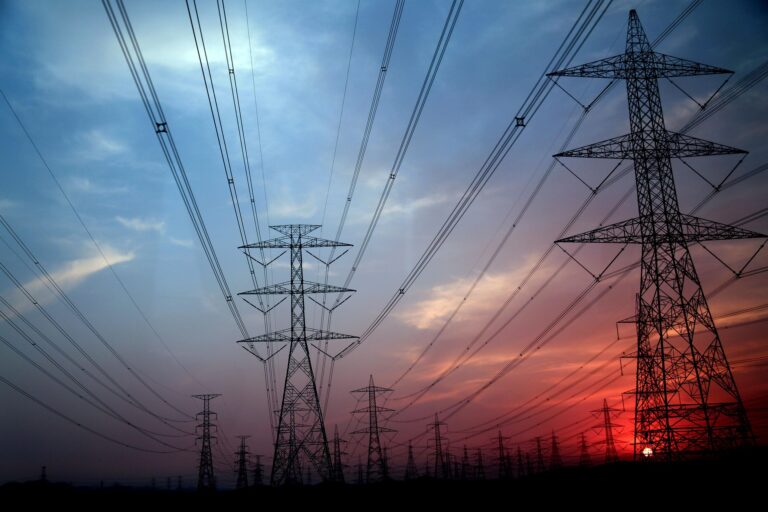Article
The PSPS Paradigm Shift

“The lights may go out by design, but the mission has never been clearer: keeping communities safe through decisive operational decision-making.”
Picture this scenario: At 2:47 AM on a wind-whipped October morning, an electric utility meteorologist stares at forecast models with growing unease. What had been predicted as manageable 35 mph winds twelve hours earlier now shows catastrophic potential: sustained winds of 45 mph with gusts reaching 70. In twelve hours, the electric utility might need to make a decision that would have been unthinkable just five years ago: intentionally cutting power for up to 50,000 customers in order to prevent a high-probability catastrophic wildfire.
For electric utilities in wildfire-risk areas nationwide, this scenario represents the new reality of operations. Public Safety Power Shutoffs (PSPS), once a radical concept, have rapidly evolved into the new standard of care. Today, regulators don’t just expect electric utilities to have PSPS programs: they consider it negligent not to have them, even if they’re rarely used.
This requires electric utilities to embrace a fundamental change in mindset, from “we will never turn off the power” to “we will do everything in our power to create a safe community, and minimize the impact of PSPS if it needs to be used.” This comes with a change in operational approach, which requires data, precision and communication to approach PSPS surgically: only when necessary and only where necessary.
The Sprint Against Time
Unlike traditional electric utility operations that can unfold over days or weeks, PSPS decisions happen in a compressed timeframe that leaves no room for hesitation. Electric utilities have maybe 48 to 72 hours from the moment they can forecast high-risk conditions to the moment they need to notify customers. In that window, they’re analyzing thousands of assets, running risk calculations on hundreds of circuits, and making decisions that affect tens of thousands of lives.
This isn’t leisurely analysis: it’s a sprint requiring immediate action and coordinated responses. The process has evolved dramatically since those early days of broad shutoffs, with electric utilities developing increasingly precise approaches to minimize customer impacts while maintaining safety.
But this precision comes at a cost: the need for split-second decision-making under enormous pressure.
The Meteorologist’s Critical Role
In this new paradigm, electric utility meteorologists have become the first line of defense in wildfire prevention. No longer simply weather forecasters, they’re now critical decision-makers whose forecasts trigger million-dollar operational responses. Meteorologists who once focused on telling operations teams what weather to expect now must identify which areas face the highest ignition risk.
The integration between meteorology and operations has become seamless by necessity. Weather data flows directly into asset risk models, which feed into circuit-level decision matrices, which trigger customer notification systems—all within hours of a forecast update.
Building Your Decision-Making Framework
For electric utilities developing or refining their PSPS capabilities, the operational challenge centers on key questions that must be answered before the next high-risk weather event:
Decision Prioritization: What sequence of decisions needs to be established in advance? How do you move from weather forecast to asset evaluation to customer notification in compressed timeframes? Which decisions can be made in parallel, and which must follow a specific order?
Rapid Asset Evaluation: When analyzing thousands of assets under time pressure, how do you prioritize which circuits or equipment to evaluate first? What criteria determine high-priority versus lower-priority areas for immediate risk assessment?
Internal Capability Requirements: What roles and expertise need to be available 24/7 during high-risk periods? How do you structure teams to enable rapid decision-making across meteorology, operations, and customer communications?
Communication Coordination: How do you ensure seamless information flow from weather forecasting through operational decisions to customer notifications? What internal processes prevent communication delays when every hour matters?
These questions don’t have universal answers: each electric utility’s responses will depend on their specific territory, asset configuration, and risk profile. But addressing them in advance creates the foundation for effective PSPS decision-making when time is critical.
The Path Forward
The evolution is measurable: PG&E has brought down its number of impacted customers by over 10x per year through wildfire forecasting, asset-level risk analysis, and circuit control improvements since 2018. What once seemed like an impossible balance (safety and reliability) has become the new standard of excellence.
For electric utility leaders still navigating this transition, PSPS isn’t just another tool in the wildfire mitigation toolkit. It’s a fundamental reimagining of what it means to serve communities responsibly in an era of climate risk. The electric utilities that thrive will be those that embrace this paradigm shift completely, investing in the meteorological capabilities, operational precision, and community relationships that make PSPS not just possible, but optimized and exemplary.
The lights may go out by design, but the mission has never been clearer: keeping communities safe through decisive operational decision-making.


